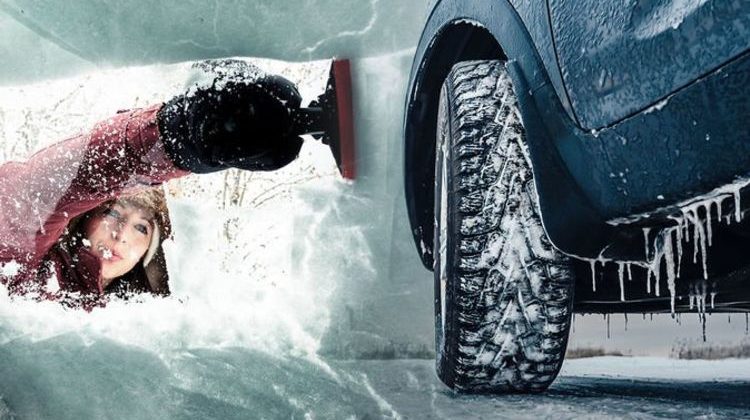Martin Lewis explains Halfords' free winter car check
We use your sign-up to provide content in ways you’ve consented to and to improve our understanding of you. This may include adverts from us and 3rd parties based on our understanding. You can unsubscribe at any time. More info
The onslaught of winter weather can bring up a number of problems impacting your vehicle, with AXA predicting a 36 percent increase in the chance of low tyre pressure and a whopping 51 percent increased risk of a dead battery. Luckily, there are some ways drivers can maintain their cars to reduce the danger of such problems arising.
Four common winter car problems to look out for
A dead battery
Suddenly getting into your car to find the battery has depleted can cause a major disruption to your day.
Though it can happen at any time of year for a number of reasons, according to AXA the chance of such an occurrence almost doubles when the thermometer drops.
According to F1 Auto Centres, this is because typically car batteries hold their charge y using a liquid electrolyte solution.
However, in the winter months, the solution can be impacted by the sudden change in temperature. Most often, if the temperature drops too much, the solution can end up freezing and is not as effective in transferring power.
AXA urges drivers to “think ahead” and have their battery checked to make sure it is running at full capacity.
Your local mechanic can test the battery and fit a new one if necessary.
In the event your car is struggling to start, experts from Halfords suggest turning off all the electrics and dipping the clutch as you turn the key.

Flat tyres
Though flat tyres are another year-round issue motorists can face, in the winter months the risk increases by 36 percent.
The main reason for this is, once again, down to a drop in temperature.
In some cases, sudden cold temperatures can cause the air to become denser, thus lowering tyre pressure.
Tyres can also simply lose pressure over time, with many drivers not realising until it is too late.
When driving, it is important to be mindful of the texture of the road beneath you.
Try to avoid any potholes or bumps, as well as bumping up the kerb unnecessarily.
Ensure you are regularly checking your tyres for potential leaks.
The ultimate way to keep on top of your tyre pressure, however, is simply by frequently checking pressure levels and topping up as needed.
DON’T MISS
Drivers could be fined £40 for defrosting their car windscreen [INSIGHT]
How to defrost your car windscreen without turning your engine on [ADVICE]
Audi A3 Sportback named UK’s best used family car [AWARDS]
Freezing fluids
From your screenwash to the water pump, the cold weather can play havoc with the liquid components of your motor.
In the event fluids are freezing beneath your car bonnet, you’ll likely have to make an emergency trip to your mechanic which can be an unexpected cost.
Many brands make “freeze-resistant” wiper fluid, which should be used in the winter months.
Make sure to drain out all of your old wiper fluid and keep levels topped up to ensure freezing does not occur.
If there are any signs another liquid component seems to have frozen, such as your cars radiator or water pump, you should switch off the engine immediately and allow time to thaw.

Frozen windscreen wipers
An overnight frost often means waking up to a frozen windscreen.
While scraping the ice off your windscreen can eliminate part of the problem, pulling on your windscreen wipers could risk damaging them.
Instead, make sure your engine is off before beginning the scraping process.
Windscreen wipers should tend to free up as you scrape ice from the windscreen, but there are some liquids that can help the process.
Cold weather windshield wiper fluid can soften the ice and speed up the de-icing process.
Alternatively, Farmers’ Almanac recommends using a mix of two parts vodka and one part warm water to clear ice away.
Source: Read Full Article
